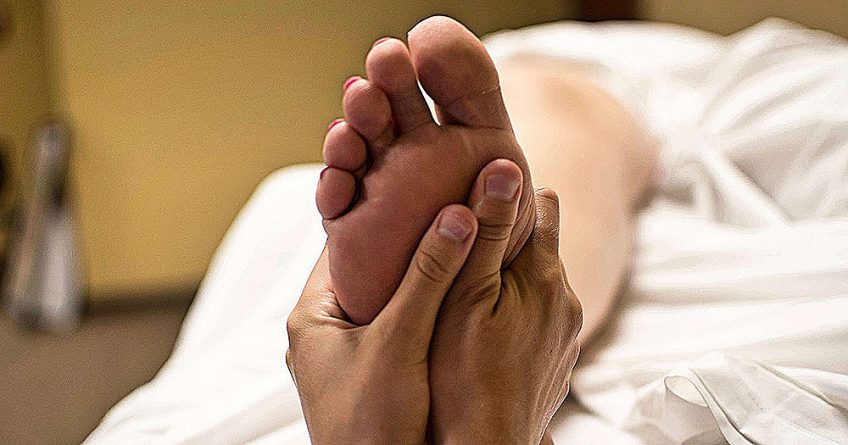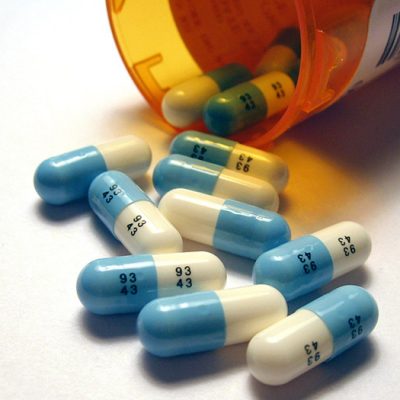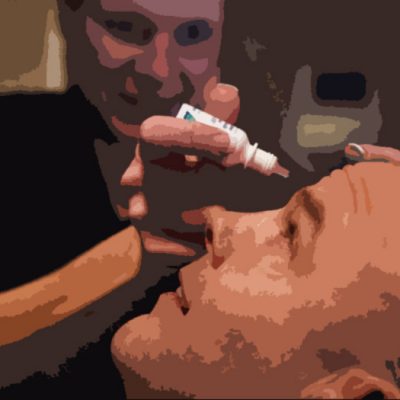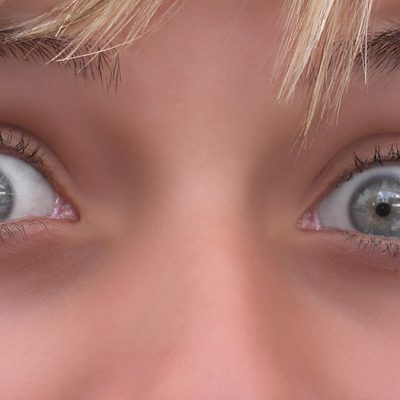There are more than 1,700 nerve endings in your feet, so it’s no wonder that 75% of the population experiences foot pain from time to time. Yet, most people don’t give their tootsies a second thought until their feet are sore and hurting.
But a few minutes of pampering your feet will deliver countless hours of standing, walking and dancing pleasure. So, tantalise your toes with peppermint and swathe your soles in strawberries. It’s easy to be your feet’s best friend.
Margi Miles, who has worked for 20 years as a licensed massage therapist, reflexologist and pedicurist, points out that happy feet are not only pleasant to live with — but a necessary component of good health. Noting that every point in the body can be accessed through one of the more than 1,700 nerve endings in the foot, Ms Miles, says, “Most people just don’t understand the connection of the feet to rest of the body.”
Although you could heel-and-toe it to a foot treatment centre, there are plenty of things you can do right at home. Here are some of her favourite tips:
Soak Your Feet
For those tired, aching feet, Ms Miles suggests a soothing soak with essential oils. You will perk up your senses — and the circulation in your feet — by adding rosemary, peppermint, lemon, wintergreen or eucalyptus oils to hot-as-you-can-stand-it water for a five-minute foot soak.
If essential oils don’t fit the budget, using facial cleanser is a little-known secret that Ms Miles says is “awesome” for your five-minute dip, thanks to camphor oil, a key ingredient that’s both stimulating and antibacterial. Just add a few healthy squirts of camphor oil facial cleanser to your hot soaking water.
Foot Massage
Post-soak, massage your feet with rosemary olive oil or with antioxidant-rich grapeseed oil infused with grated fresh ginger. Then pop on clean, white cotton socks and call it a day.
Ms Miles offers one word of caution: “No mineral oil! The molecules are so huge… they actually block the pores and dehydrate the skin because water can’t be absorbed.”
A Berry-Good Rub
A slightly exotic and deliciously indulgent way to smooth dead skin off your feet is to give them a good rub in strawberry mash. Just blend together by hand eight strawberries with two tablespoons of olive oil (or safflower oil) and one teaspoon of kosher salt. Massage the paste on your feet; let them luxuriate in the berry juice for five minutes, rinse and dry.
Salt Your Feet
For a more prosaic pick-me-up, Ms Miles’ suggests taking half a tablespoon of sea salt into your shower or bath and scrubbing vigorously from heel to toe to exfoliate (remove dead skin) and get the blood flowing. Follow up with a peppy mint lotion. For extra indulgence, add a favorite essential oil to the salt prior to use.
Deodorising Smelly Feet
Chronic sweaty or smelly feet can indicate a build up of toxins in the body. Miles offers this simple antidote: “Consume the appropriate amount of water for your weight to flush your system.
Also, soak once a week in Epsom salts and hot water to draw out the toxins. Finish with a minty oil or lotion for a fresh scent.” For extreme cases, use arnica oil.
Scrubbing tops and bottoms of feet with a small foot brush in daily showers is helpful, too.
Conquering Calluses
Plagued by calluses? It’s time to toss the pumice stone and get the right tools for the job. Pumices are a no-no, says Ms. Miles, because they get mushy when they get wet.
Instead, she recommends a waterproof foot file, because “they last forever and work great.” By all means, avoid taking a razor to calluses, as razors can cut the feet severely. Instead, a delicious oil rub will soften your feet in no time.
Eliminating Fungus
This common infection seems to cause the most embarrassment. “People are horrified and wonder how they got it,” says Ms Miles. “I tell them it’s just a spore. You got it from the spa, your partner, your kids. We’re covered in spores!”
Try this simple and effective home remedy:
- Tools: Epsom salts, distilled white vinegar, over-the-counter anti-fungal cream, toenail clippers, a small footbath and a commitment to see this through.
- Dissolve Epsom salts in the tub with hot water. Use the package’s recommended amount of salts for just enough water to cover your feet. Soak for 10 minutes.
- Toss the saltwater. Pour in enough undiluted vinegar to immerse the fungal area. Soak another 10 minutes.
- Cut nails as far back as comfortable. Dry feet thoroughly.
- Slather on anti-fungal cream.
For a major infection, repeat every night for four weeks. For more minor irritations, three times a week, until a difference is noticed. Do once a week until gone. If the problem persists, see a health care professional.
Help for Nerve Disorders of the Feet
Do you suffer from chronic foot or leg pain? Burning, numbness, or tingling? Always have hot or cold feet? You may be one of the hundreds of thousands of Australians suffering from a nerve disorder called peripheral neuropathy.
The condition is not a problem with your head. It is a medical condition affecting your feet, sometimes hands, and occasionally muscles. Three types of peripheral neuropathy exist.
The first type is called sensory neuropathy and is the most common form. Sensory neuropathy produces various pain symptoms such as aching, burning, stabbing, or tingling. This type of nerve damage can be further classified as large nerve fibre (numbness and tingling) or small nerve fibre (temperature and pain).
Autonomic neuropathy involves your body’s regulation of involuntary or semi-voluntary functions such as the control of inner organs and sweating. These patients may have excessively dry or wet skin on their feet.
Lastly, there is motor neuropathy, which describes the alteration in the function of muscles and includes reflexes. Crooked toes, weakness, and instability may be manifestations of a motor neuropathy.
Interestingly, some people present with combinations of different types of peripheral neuropathy. Once you realize that you have neuropathy, finding the cause can be challenging.
Causes of peripheral neuropathy
Diabetes is responsible for the greatest number of neuropathy cases. This results when elevated blood sugars result in damage to the outer lining of a nerve. Once this damage, called demyelination, has occurred, the nerve starts to misfire.
Another common cause of peripheral neuropathy is alcohol consumption. Heavy drinking is not necessarily required to develop nerve injury. Some patients drank moderately over an extended period of time.
Many back or spine conditions can also contribute to this syndrome. In this case, pressure on the nerves where they exit the spine are compressed and damaged.
A comprehensive list of all possible causes is too lengthy for this discussion but idiopathic neuropathy is certainly a common diagnosis, which means of unknown origin.
Neuropathy treatments
Fortunately, now more than ever, new treatments are available and frequently successful.
A treatment plan will usually begin with a combination of nutritional supplements and prescription medications applied topically. Most patients improve with this first step alone.
The next step uses one or more of the following: prescription anti-depressants, prescription anticonvulsants, and prescription analgesics. Other treatments for peripheral neuropathy may include nerve blocks, nerve stimulation, magnets, acupuncture, and psychotherapy.
On the horizon, new therapies may use nerve growth factors, stem cell technology, and experimental drugs. The main message here is that help is available to those that are seek it.









